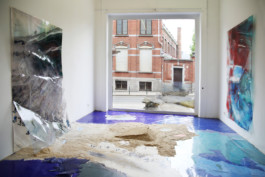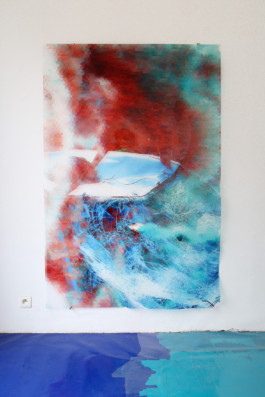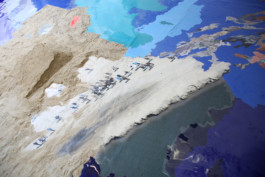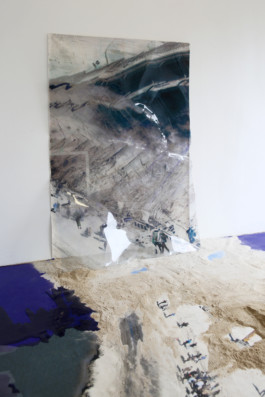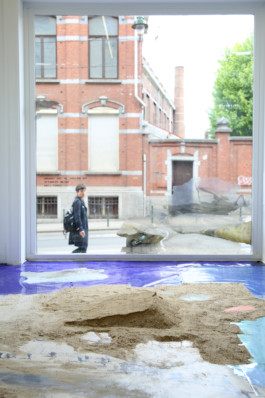THE WEIGHT OF THE GROUND
Solo show at Cunst-link (Brussels), text by Giulia Blasig and Dounia Mojahid
The Weight of the Ground is the first solo show of the French artist Naïmé Perrette in Brussels and the inaugural exhibition of Cust-link’s new program.
Naïmé Perrette is a multimedia artist mixing video art, photography and sculptural installations.
Inspired by artificial ecosystems, natural phenomena, territorial representations and the interferences between them, she draws relationships between environmental politics and their cultural contexts.
For her exhibition at Cunst-link, Naïmé Perrette will show new pieces, some of them made from recycled elements of previous works, aiming to create from the existing, to sculpt and construct from what is already made.This evolving creative research shows her interest in movement and shifting between times and spaces, and representation becoming a new reality.
The Weight of the Ground refers to themes that appear in many of the artist’s works. The ground acts as an existential origin of nature and landscapes; observing its weight is an attempt to measure and to critically investigate its limits.
Through a process of deconstruction, the weight disappears and loses its consistency, the transparency of over-lit surfaces and digital screens become the founding elements of the artist’s selective cartography and landscapes.
Interested in cultural and social urbanist anomalies, Naïmé Perrette’s presentation focuses on artificial islands as a metaphor of the human desire to project new rules and control growth. One of her ongoing projects focuses on the Marker Wadden: an island in the Markermeer Sea near Amsterdam, entirely designed by man’s hand to respond to ecological issues. Planned as a “new wilderness”, its creators are deciding its type of nature, to host the endangered birds that are the most representative of the Netherlands.
Perrette questions our relationship to the environment, and pictures the to-be-inhabited spaces to see what they reveal about us. Mixing different perspectives, she highlights almost infinite layers of representation. Her observation of the relationship between humans and our environment offers a way to question people’s vision of nature, its figurative weight.
